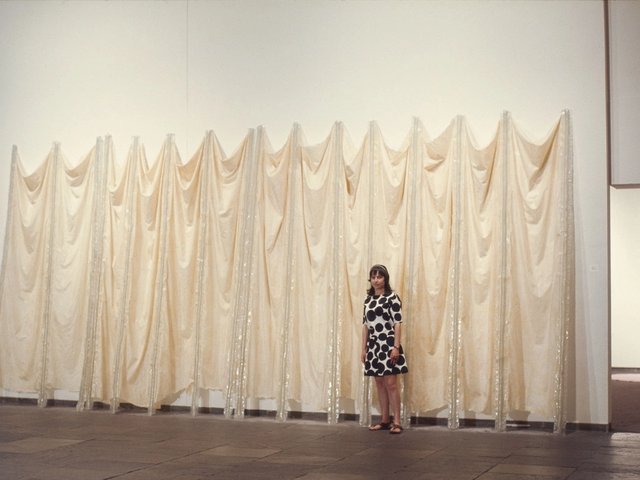The Columbus Museum of Art has recreated a monumental work of art by Paul Feeley, decades after the original was destroyed. The museum collaborated with the artist’s estate to refabricate the nine-part, 21ft-tall sculpture, which filled the atrium of New York’s Solomon R. Guggenheim Museum in 1968. It has been installed permanently on the Ohio museum’s lawn to coincide with the completion of a $37.6m renovation on 25 October.
Feeley, a Color Field painter who taught Helen Frankenthaler and organised exhibitions with Clement Greenberg, finished designing the sculpture shortly before his death in 1966. The original was fabricated for a memorial exhibition at the Guggenheim two years later. Nannette Maciejunes, the director of the Columbus Museum, says that at the time, “nobody knew what to do with it, and it was subsequently destroyed”.
The new version was made in New York under the watchful eye of Ruth Ann Fredenthal, who painted nearly all of Feeley’s sculptures during his lifetime. Originally built from wood and titled Sculpture Court, it has been remade in aluminium and retitled Karnak, after the temple complex in Egypt, which Maciejunes says reflects Feeley’s intentions.
The museum’s new wing will open with the first retrospective of Feeley's work since the Guggenheim show where Sculpture Court first appeared. (The exhibition was co-organised with the Albright-Knox Art Gallery in Buffalo, New York.) The art historian David Anfam says that the sculpture is “a kind of summation of his art but one that also seems set to have taken him into new territory. The fact that it came at the very end of his life is deeply ironic, because he was clearly going places with this work.”



